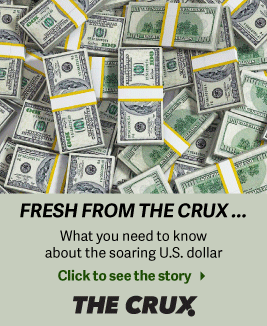| Home | About Us | Resources | Archive | Free Reports | Market Window |
|
Editor's note: This week we're sharing classic advice to help you maximize your gains... minimize your losses... and most importantly, sleep well at night. On Monday, we shared four things to keep in mind with stocks near all-time highs. Yesterday, we shared the two-sided benefit of trailing stops. In the classic essay below, Steve shares a simple guideline that will help keep your portfolio safe no matter how high stock valuations get...
Exactly How Much You Should Invest in a Single StockBy
Wednesday, December 24, 2014
How much money should you put into one stock or investment?
Should you buy 100 shares or $5,000 worth of shares? Should you invest 5% of your portfolio or 5% of your net worth?
These are incredibly important questions... And your answers could mean the difference between making real money from your investments and losing it all.
I'm not joking here. If you don't have a system for determining how much money to put into one investment, you're just shooting from the hip.
That's unacceptable – especially when the answer is so simple...
So... what's the RIGHT amount of money to put into any one investment?
If you're not sure, you are not alone. I'd bet 99% of investors don't have a system for determining how much is too much to invest in one idea, or how much is not enough. It's stunning to me how willing people are to risk their life savings like this – especially when there are simple answers.
Two good friends of mine, both PhDs, have spent their lives working to help individuals become better traders. They do this by zeroing in on problems like what I've described above...
The first is Dr. Van Tharp, who was interviewed in the excellent book Market Wizards: Interviews with Top Traders, by Jack Schwager. The second is Dr. Richard Smith, who has a PhD in applied mathematics.
Their work focuses on the same simple concept:
It's not how much you have invested, but how much you have at risk.
Let me explain...
Let's say you have a $100,000 portfolio. You're willing to RISK a loss of 1% of your portfolio – $1,000 – on a single trade. You also use my recommended 25% trailing stop.
According to the rules Van and Richard have laid out, you could invest $4,000 in that trade. If the trade goes down 25%, you've lost $1,000 – or 1% of your portfolio.
That's the basics.
You can push all these numbers around, of course.
You may say, "Gee, I really don't want to lose 1% of my portfolio on any one idea." You could do a couple things...
You could invest less money... If you invest just $2,000 (0.5% of a $100,000 portfolio), you're only risking $500 (with a 25% trailing stop) if the trade goes against you.
You could also tighten your trailing stop... If you are only willing to risk 0.5% of your portfolio on any one position, you could tighten your trailing stop to, say, 10%. Since you're OK risking $500, you could invest $5,000 in that trade.
I know it's a lot of numbers. The important point to understand is this:
It's not how much you have invested, but how much you have at risk.
So how much money should you have "at risk"? And what is the "right" trailing stop?
Richard has put together some great resources to help you figure out the answers to these questions and more at his site, TradeStops.com.
For example, Richard has developed interactive calculators for figuring out reasonable trailing stops and position sizes depending on how risky a stock is. In fact, we liked TradeStops.com so much, our publisher invested in it. We use it every day.
I also recommend Van's book, Trade Your Way to Financial Freedom. You can learn more about Van's book and the other educational trading tools he offers at his website here.
These two guys are sincerely committed to making you smarter investors. Check 'em out.
Good investing,
Steve
Further Reading:
Editor in Chief Brian Hunt says Market Wizards changed his life. "It's the first trading book I recommend when anyone asks. And I think every DailyWealth subscriber should read it." Get the full story here.
DailyWealth classic: Following your trailing stops is one of the foundations of successful investing. See how the strategy helped Matt Badiali's subscribers book 542% gains in just 10 months here.
Market NotesIF THIS STOCK IS SOARING, CAN THINGS REALLY BE ALL THAT BAD? In yesterday's column, we noted that hotels are ending 2015 with a flourish... which lets us know America is doing well.
Today, we look at another excellent economic gauge... the condition of ADP.
Automatic Data Processing (ADP) is the country's leading payroll processing and benefits administration company. ADP's customer base includes more than half a million companies, with more than 80% of its business coming from the U.S. In short, ADP is a great "bellwether" for U.S. employment trends. If its customers aren't hiring, its business won't grow.
ADP's business is growing. Earlier this month, the company reported that November was the eighth straight month of at least 200,000 new jobs added in the U.S. As you can see below, all this growth in payrolls has translated into a strong uptrend in shares of ADP. In the past two years, shares are up more than 50% and recently struck a new all-time high. As long as ADP is booming, it's hard to deny that that the U.S. economy, while not great, "can't be all that bad."
 |
Recent Articles
|



